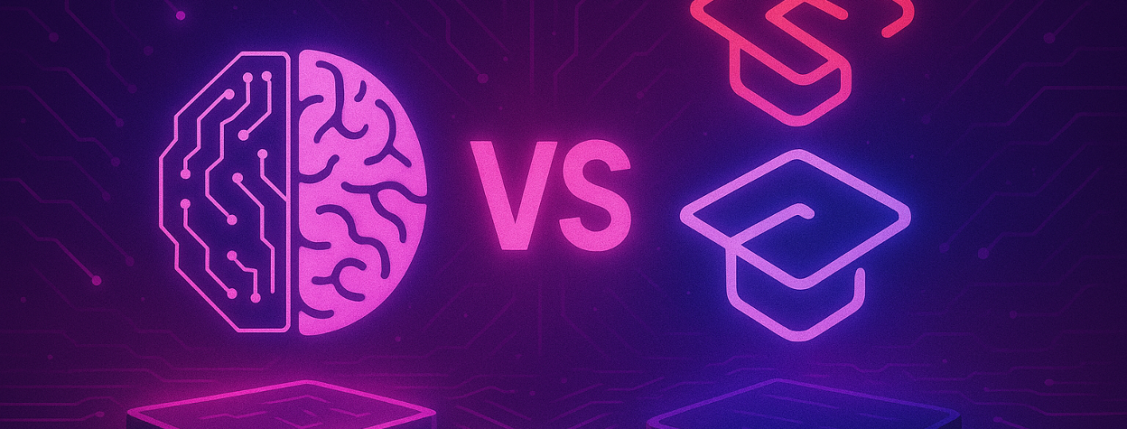Key Takeaways
- ZeroGPT shows 95% accuracy for basic AI blog content but fails with human writing, incorrectly flagging it as AI-generated 50% of the time, making it unreliable for serious use.
- Scribbr’s premium version achieves 84% accuracy for AI detection while showing significantly fewer false positives, though it still struggles with consistency and sophisticated AI models.
- ZeroGPT has a more user-friendly free version with higher word count limits, while Scribbr provides more detailed analysis in its premium version.
- The unreliable nature of these tools means content creators and educators should focus on transparency and quality rather than depending on flawed detection technology.
- AmpCast technology takes content creation to the next level by automatically transforming your expertise into 8 quality content formats and distributing across 300+ sites, boosting credibility.
How ZeroGPT and Scribbr Actually Work
ZeroGPT’s Detection Algorithm
The ZeroGPT system analyzes patterns in word choice, sentence structure, and stylistic elements that supposedly differentiate between human and AI writing.
What makes ZeroGPT particularly problematic is its approach to statistical analysis of text. The tool looks for perceived signs of AI writing, including consistent tone, structured sentences, and statistical probability distributions of words.
Unfortunately, these same characteristics appear in high-quality human writing. This approach allows ZeroGPT to achieve reasonable accuracy rates when analyzing obvious AI content from models like ChatGPT but fails spectacularly when encountering sophisticated human writing.
Scribbr’s Technology and Approach
The Scribbr’s AI detector system evaluates content based on numerous factors including syntax complexity, vocabulary diversity, and natural variations in writing style.
Scribbr has developed its algorithm with particular attention to academic writing, which explains both its popularity in educational settings and its somewhat better performance compared to ZeroGPT.
The system’s more conservative approach to flagging content as AI-generated means it’s less likely to falsely accuse human writers, but it also means more AI content may slip through undetected.
How AmpiFire Works:
- Research & Target: Find high-demand topics your buyers search for
- Create & Repurpose: AmpiFire’s AmpCastAI generates news articles, blogs, videos, podcasts, infographics, slideshows, and social posts
- Distribute & Amplify: Auto-publish to 300+ sites including Google News, YouTube, Spotify, and major news networks
Get more traffic from people who want to buy your stuff, and powerful “As Seen On” trust badges for your site.
Do It Yourself (with AI), Done For You Content, & 100% Managed Organic Growth options available.
Grow Your Free Traffic From Everywhere
Accuracy Face-Off: Real Testing Results
Detection Rates for ChatGPT Content
When testing against standard ChatGPT-generated content, both tools perform their best, though with notable limitations that become apparent with more sophisticated testing.
ZeroGPT identifies unedited ChatGPT content with accuracy rates approaching 95%, making it reasonably reliable for detecting the most obvious AI writing from this popular model. The tool rarely misses completely AI-generated paragraphs when they haven’t been edited or refined.
Scribbr also performs well with ChatGPT content, achieving detection rates around 84% in real-world testing rather than the higher rates sometimes claimed in marketing materials.
False Positive Rates Compared
Perhaps even more important than catching AI content is avoiding false accusations against human writers, and this is where the tools show their most dramatic differences.
ZeroGPT’s staggering 50% false positive rate means it incorrectly flags human-written content as AI-generated in approximately half of all tests. This isn’t a minor calibration issue, it’s a fundamental failure that makes the tool dangerous for any application where false accusations have consequences.
Scribbr demonstrates dramatically better performance in avoiding false accusations, with only a 3.3% false positive rate in testing. This represents a massive improvement over ZeroGPT’s performance, though it still means that roughly 1 in 30 human-written pieces may be incorrectly flagged.
For educational or professional contexts, even this lower rate of false accusations can cause serious problems.
Handling Paraphrased AI Content
The real test of detection technology comes when analyzing AI content that has been deliberately modified to evade detection. Both tools struggle significantly with this challenge, revealing fundamental limitations in current detection approaches.
ZeroGPT’s accuracy drops dramatically when encountering systematically paraphrased AI content, with detection rates falling well below acceptable thresholds for reliable identification.
Scribbr demonstrates somewhat better performance with edited AI content, though it still faces significant challenges when AI outputs have been extensively modified by human editors.
This limitation is particularly relevant for content creators who use AI as a drafting or editing tool while adding substantial human contributions, as such collaborative approaches often evade detection entirely while still providing value to creators.
Comparison Table: ZeroGPT vs Scribbr
| Feature / Metric | ZeroGPT | Scribbr AI Detector |
| Accuracy on Basic AI Content | Around 68% to 75% in independent tests; up to 95% on obvious raw ChatGPT content (but drops notably for edited AI) | Premium version achieves around 84%; free version around 78% accuracy on varied AI content |
| False Positive Rate (Human Content mistakenly flagged as AI) | Very high, about 50% in some reports, meaning half of human writing may be falsely flagged as AI-generated | Much lower, approximately 3.3% or 1 in 30 human texts flagged incorrectly |
| Detection on Sophisticated AI (e.g., GPT-4) | Performance drops significantly; struggles with newer, more advanced models and lightly edited AI content | Performs better than ZeroGPT with GPT-4 content; premium version can catch near 100% of GPT-4 texts, but still imperfect |
| Detection of Paraphrased or Edited AI Content | Poor detection; accuracy drops substantially with paraphrased or lightly edited AI-generated content | Better than ZeroGPT but still misses around 40% of carefully edited AI content |
| Reliability for Human vs AI Writing | Highly unreliable due to frequent false positives, especially with polished, formal human writing | More balanced approach with fewer false accusations but not fully reliable for high-stakes use |
| User Interface & Experience | Simple, user-friendly, no account required, faster results, higher free word count limits | More complex platform, academic focus, provides sentence-level analysis and detailed reports, premium pricing for full features |
How to Use AI Detectors Effectively
Interpreting Detection Results Correctly
Detection scores should be viewed as unreliable probability indicators rather than authoritative determinations. ZeroGPT’s results are particularly suspect given its 50% false positive rate, meaning any “positive” detection has roughly even odds of being wrong. Scribbr’s more conservative approach makes its results somewhat more credible, but still not reliable enough for consequential decisions.
When interpreting results, both tools frequently mistake characteristics of good human writing—consistency, structure, formal tone—as indicators of AI generation. Professional writing, academic papers, and well-edited content naturally score higher on AI detection scales regardless of their actual authorship. This fundamental confusion between quality and artificiality represents a core flaw in current detection technology.
When to Use Multiple Detection Tools
The common advice to use multiple detection tools for verification unfortunately doesn’t solve the reliability problem—it simply multiplies unreliable inputs. If ZeroGPT incorrectly flags human content 50% of the time and Scribbr does so 3.3% of the time, using both tools doesn’t create reliable detection; it creates confusion and compounds the risk of false accusations.
Different AI detection tools may have varying strengths against specific AI models, but none achieve the reliability needed for confident content verification. ZeroGPT performs relatively well against basic ChatGPT output but fails catastrophically with human writing. Scribbr shows better overall balance but still lacks the accuracy needed for high-stakes decisions. Using multiple flawed tools creates an illusion of thoroughness while perpetuating the same fundamental accuracy problems.
Build Trust Through Authentic Content Creation, Not Detection Workarounds
The comparison between ZeroGPT and Scribbr highlights a critical truth: unreliable AI detection tools shouldn’t dictate your content strategy.
Instead of worrying about flawed algorithms that flag human writing as AI-generated 50% of the time, smart businesses focus on creating genuinely valuable content that serves their audience.
Quality content built on expertise, authenticity, and real insights will always outperform generic material, regardless of what detection tools claim. This is where Ampifire’s AmpCast platform becomes invaluable.
Rather than spending countless hours on tactical content creation and distribution, AmpCast transforms your core expertise into 8 different content formats: news articles, blog posts, podcasts, videos, infographics, slideshows, and social media posts. It then distributes them across 300+ high-authority sites including Google News, TikTok, Instagram, YouTube, Spotify, and major news networks automatically.
The return on investment is significant. By meeting all your content creation needs in one single platform, you don’t need to spend massively on multiple platforms to create content that scales, saving you hundreds of dollars.
This also frees you from time-consuming writing and publishing tasks, allowing you to focus on what truly matters: building meaningful relationships with clients and growing your business.
Additionally, when prospects see your authentic content consistently appearing across respected platforms, it significantly boosts your brand credibility and positions you as the trusted authority in your field.
Frequently Asked Questions
Can AI detectors identify content from all AI writing tools?
Neither ZeroGPT nor Scribbr can reliably detect content from all AI writing tools, and their performance varies dramatically even with popular models. Both perform best with content generated by widely-used models like ChatGPT-3.5, though ZeroGPT’s 95% accuracy applies only to obvious, unedited AI blog content.
Detection accuracy drops significantly for sophisticated AI models, extensively edited content, and specialized AI tools designed to produce human-like writing.
Do AI detection tools keep my content private and secure?
Privacy policies vary between ZeroGPT and Scribbr, though both require transmitting your content through their servers for analysis, creating inherent privacy risks.
ZeroGPT claims not to store submitted content beyond the analysis session, though this provides limited protection given the data must still pass through their systems.
Scribbr’s privacy policy indicates submitted content may be retained for service improvement, though they provide security assurances.
How often should I test my content for AI detection?
Given the demonstrated unreliability of current detection tools, the more important question is if you should test content at all using these flawed systems.
For content creators and marketers, implementing testing protocols based on tools with 50% false positive rates creates more problems than it solves, potentially flagging legitimate human work while missing sophisticated AI content.
Can these tools distinguish between AI-assisted and fully AI-generated content?
Both ZeroGPT and Scribbr fail spectacularly at distinguishing between different levels of AI involvement in content creation.
ZeroGPT’s 50% false positive rate means it frequently flags content with no AI involvement whatsoever as AI-generated.
Scribbr performs better at avoiding false accusations but still cannot reliably quantify the degree of AI assistance or identify which specific portions involved AI help.
What’s the best approach to scale content creation without triggering false AI detection flags?
Instead of attempting to outsmart inconsistent AI detection systems that often misidentify human-written content, concentrate on delivering authentic value through superior content quality and smart distribution strategies.
AmpCast transforms your ideas and insights into 8 different content formats; news articles, blog posts, podcasts, videos, infographics, slideshows, and social media posts, then automatically shares them across 300+ authoritative platforms.
This methodology builds real audience connections and establishes lasting brand trust, bypassing dependence on unreliable detection algorithms.
Author
-

CEO and Co-Founder at AmpiFire. Book a call with the team by clicking the link below.
Related Posts

GPTZero vs ZeroGPT AI Detector Mega Test: Best Accuracy & False Positives?
We tested GPTZero and ChatGPT on dozens of AI- and human-written texts (including casual blogs, short stories, and even political…
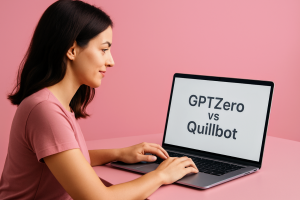
GPTZero vs Quillbot AI Detector: Which One Can Detect AI Content More Accurately?
Compare GPTZero and Quillbot AI Detector on accuracy and methods. Discover which tool excels at spotting AI-written content in our…
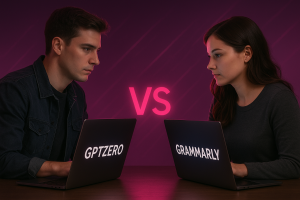
GPTZero vs Grammarly: AI Detector: Which One Can Detect AI Content Better?
Compare GPTZero and Grammarly's AI detection capabilities. Discover which tool better identifies AI-generated content for your writing needs.
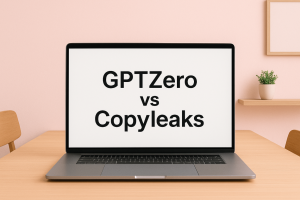
GPTZero vs Copyleaks: Which is the Better AI Detector?
Compare GPTZero vs Copyleaks AI detectors. Learn accuracy rates, features, pricing, and which tool works best for different business needs…
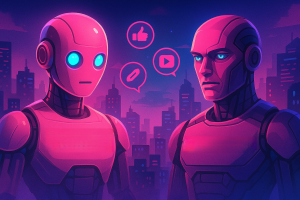
GPTZero vs Originality.ai: Which is the Better AI Detector?
Compare GPTZero vs Originality.ai AI detectors. Learn accuracy rates, features, pricing, and which tool works best for your content needs.
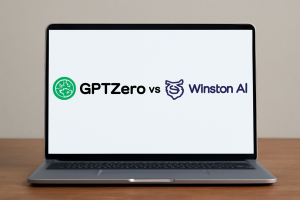
GPTZero vs Winston: Which is the Better AI Detector?
Compare GPTZero vs Winston AI detection accuracy, pricing & features. Discover which AI detector works best for educators vs. marketers…

